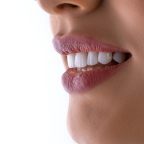
Malocclusions: Concerns beyond an Inaesthetic Smile?
Malocclusions can be separated under various categories, depending on type and severity, which most of us are aware of. Unfortunately, very few of us know about the fact that malocclusions can cause problems beyond just an asymmetrical smile. It is important to take timely action in order to avoid the more severe consequences of conditions such as heavily crooked teeth, overbite, overjet, underbite, spaced teeth and overcrowding, to name a few.
As we go over the possible complications that such malocclusions can bring about, the dangers they pose beyond just aesthetic concerns should become more apparent to the readers.
Life changing, Negative Psychological Impacts
From a scientific point of view, human beings are visual bynature- that is, they make most of their decisions based on visual cues. This aspect affects the personality development of a child with malocclusions in two primary ways:
1. External - Peer segregation, loneliness and bullying
2. Internal – Poor self-confidence, timidity, violent outbursts, sense of self-loathing, depression and anxiety on account of the external elements
Unfair as the situation is, this can have a heavy, negative impact on any child, with effects of their traumatic childhood experiences carrying over to their adult lives as well. Even if the surrounding conditions become more favourable as they grow up, the earlier experiences leave their mark on the person’s psyche, which could potentially lead to future mental health problems.
Aside from childhood events, adults oftentimes fail to provide a neutral and unbiased environment for everyone to work in as well, which only piles up on the person’s accumulating psychological stress. To conclude, it can be stated without a doubt that for a large number of people with severe malocclusions, life would be completely different, and possibly a more positive experience, had they been treated earlier with modern orthodontic treatments that are capable of correcting or improving almost any type of dental defect.
Solution: It is extremely Easy for Adults to Align their Teeth at Home Today
Aligning and correcting malocclusions in children is far more complicated than it is in adults. Children require the supervision and direct contact with an orthodontist to get their teeth straightened. For adults though, straightening their teeth at home is a possibility in most cases. In fact, with clear aligners (also known as invisible aligners) from Straight My Teeth, it is possible for adults to correct crooked teeth at home, without the fear of further social embarrassment.
Not only do these stay out of sight unless someone is looking for them, but clear aligners from Straight My Teeth can also be taken out before a social gathering if needed. This makes the products a more hygienic and socially acceptable option than traditional metallic braces. The braces can also be taken out before brushing and cleaned every night. Whatever one’s history with malocclusions had been in the past, the same effects should no longer have to be persistent and incessant in their future lives as well. The site has a payment plan option too, so do check it out and see if you can’t get your own crooked teeth straightened, without going broke in the process.
Physical Health Complications: Concerns beyond Aesthetics and Psychological Impacts
Now that we have taken a brief look at short-term and long-term mental effects which seemingly harmless crooked teeth or overlapping jaws can have on one’s lives, we should also be aware of the oral health complications that various types of malocclusions can be responsible for. Before we proceed on that front, readers will need to understand that the more severe someone’s condition is, the more likely are they to experience these effects.
This means that one crooked tooth or a mild overbite may not cause any of the issues we are about to discuss, due to the mildness of the malocclusion. However, the more severe one’s condition is, the more symptoms they will be able to identify themselves with.
Bruxism or Grinding Teeth
An inadequate and asymmetrical alignment of our bite can lead to bruxism, aka, the habit of grinding one’s lower set of teeth against the upper set unconsciously. It is not fully understood why people with identified bruxism grind their teeth unconsciously, but it has something to do with the alignment of their upper and lower set of teeth.
In fact, the action is oftentimes involuntary to the same extents our internal processes (the heart pumping blood for example). It is on the extent of the grinding habit’s independent nature, that the severity of bruxism is classified. If the bruxism is strong enough to be involuntary, rather than only being subconscious or unconscious in nature, the individual will regularly grind their teeth all night while they sleep. Detrimental effects of bruxism can be noted down along the following lines:
- Headaches
- Stiff jaw
- Cracked, chipped and even fractured teeth
- A sanding effect on the enamel, leading to gradual corrosion and decay
- Visibly smaller teeth due to the sanding effect of continuous grinding
- Mild to severe toothache
Impeded Speech Disorders
Lisps and stuttering are two uncommon effects of malocclusions that may even go unnoticed in moderate cases. In order for us to be able to speak properly, we require a proper oral alignment, so that the tongue can move around and help produce the phonetic sounds necessary for speech. Individuals with severe malocclusions often experience speech impediment because their maligned teeth and bite does not allow their tongues to produce the phonetics properly. As speech impediments generally have much more serious reasons behind them as well, only a doctor can confirm what is the real reason behind the problem. If the cause is indeed dental in nature though, that is likely the best-case scenario, since correcting misaligned teeth that cause such malocclusions is very much possible.
Malnutrition
The more severe any malocclusion is, the higher are the person’s chances of developing symptoms of malnutrition. We need to bite into food and chew it down to a state where the stomach can absorb nutrients from it with ease. As severe overjets, overbites, underbites and spaced teeth in particular make it very difficult for someone to chew food properly, they might suffer from malnutrition, without even knowing why.
Note that the individual might be consuming the same amount of food as someone of their age, lifestyle and BMI is supposed to, but due to the malabsorption of essential nutrients form the poorly chewed down food, they will still suffer from malnutrition. Such instances are also accompanied by frequent indigestion and acid reflux. When the malocclusions are that severe, immediate steps are highly recommended. During the course of the treatment, artificially ground down food, fruit juice and liquid nourishment in general is advised to counter the malabsorption effectively.
Parents should consult an orthodontist to get their children’s jawline and teeth corrected before an asymmetrical smile can have detrimental effects that it shouldn’t have on children’s lives in the ideal world. As we do not live in an ideal world, do not give up on getting that perfect smile you know you want, even if you are an adult. With home delivery kits available for straightening teeth these days, it’s a more affordable and practical proposition than teeth straightening had ever been for an adult before.

















